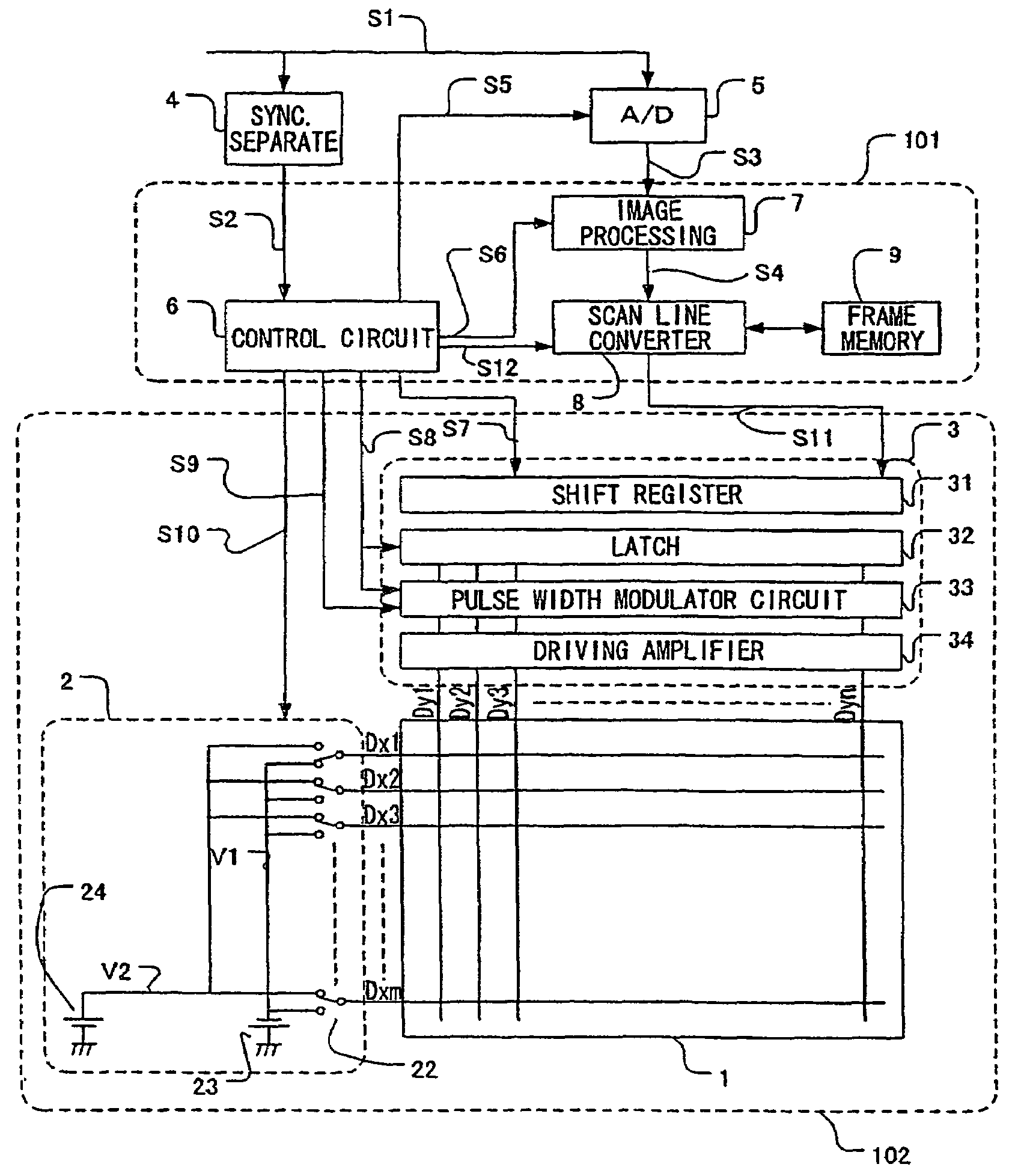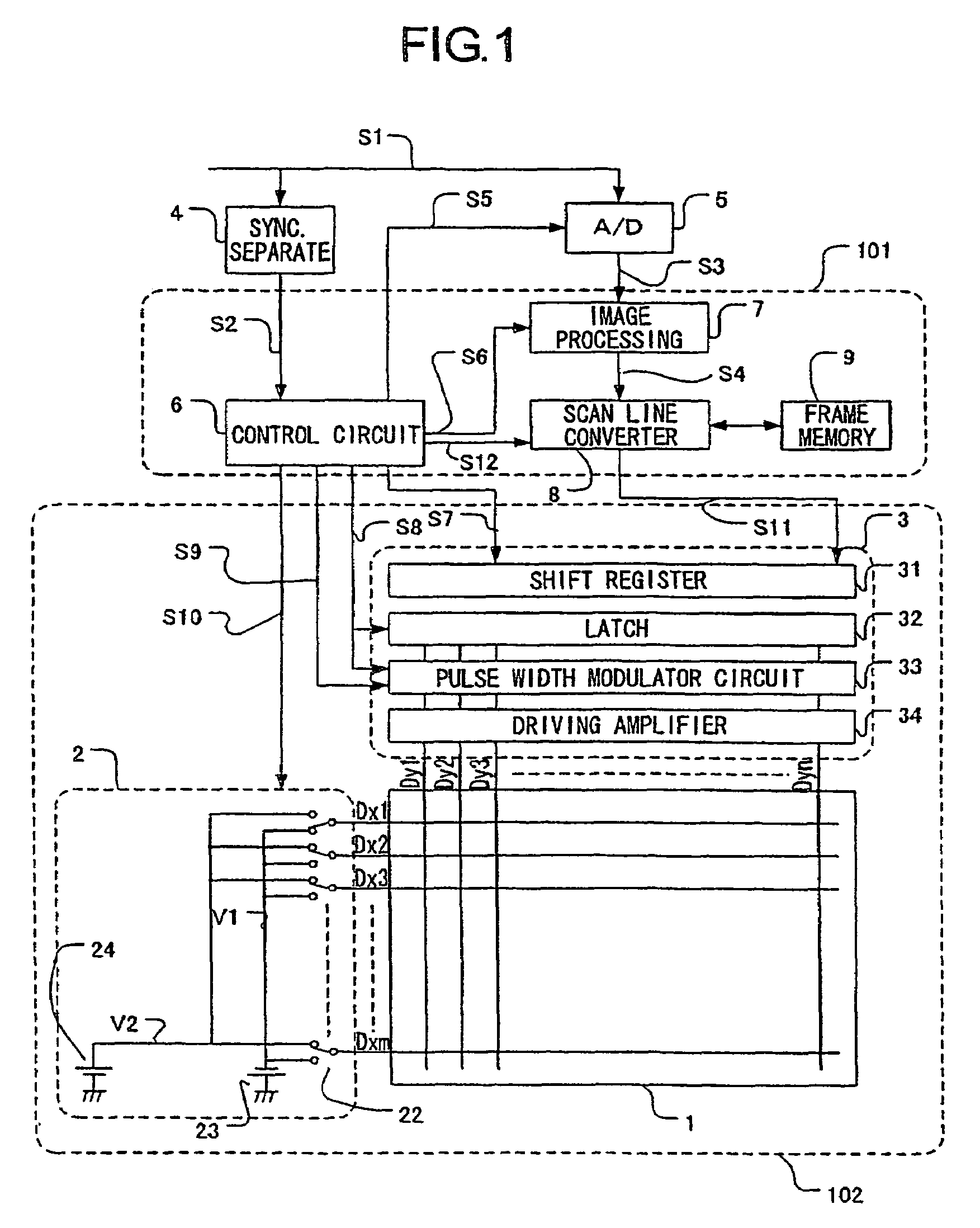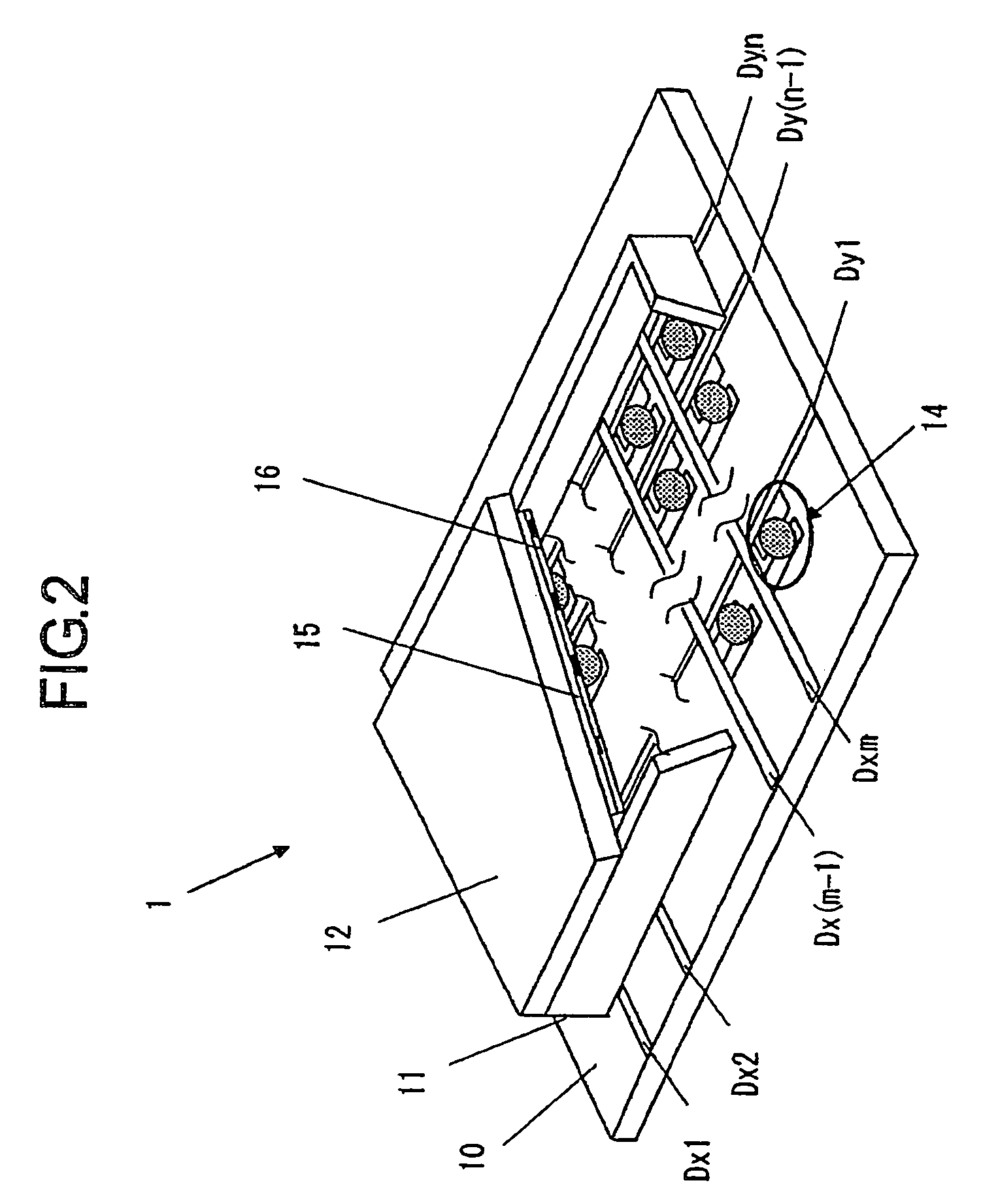Image forming apparatus and video receiving and display apparatus
a technology of image forming apparatus and video receiving and display apparatus, which is applied in the direction of instruments, television systems, signal generators with optical-mechanical scanning, etc., can solve the disadvantages of artificial motion of objects in video, flicker annoyance, and obtrusive flicker annoyance, so as to reduce the artificiality of motion of objects.
- Summary
- Abstract
- Description
- Claims
- Application Information
AI Technical Summary
Benefits of technology
Problems solved by technology
Method used
Image
Examples
first embodiment
[0100]In a first embodiment, an input non-interlace video signal corresponding to one frame is divided into video signals corresponding to two fields and the video signals corresponding to the respective fields are displayed by the interlace scan.
[0101]FIG. 4 is a timing chart that depicts a display timing control according to this embodiment.
[0102]The scan line converter 8 temporarily stores the display signal S4 of a non-interlace structure in the frame memory 9, sequentially reads data corresponding to each row from the frame memory 9 in order of (1, 3, 5, 7, . . . , 2, 4, 6, 8, . . . ) by a delay by as much as one frame, and outputs the data as the scan line converted signal S11. The scan lines are thereby converted into an interlace structure.
[0103]The scan driver 2 interlace-scans the scan wirings Dx1 to Dxm. More specifically, the scan driver 2 makes every two lines in selected states simultaneously in order of (Dx1, Dx2), (Dx3, Dx4), (Dx5, Dx6), . . . , and scans the scan wi...
second embodiment
[0107]In a second embodiment, an input non-interlace video signal corresponding to one frame is duplicated into video signals corresponding to two sub-frames and the video signals corresponding to the respective sub-frames are displayed by the non-interlace scan.
[0108]FIG. 7 is a timing chart that depicts a display timing control according to this embodiment.
[0109]The scan line converter 8 temporarily stores the display signal S4 in the frame memory 9, sequentially reads data corresponding to each row from the frame memory 9 in order of (1, 2, 3, 4, 5, . . . , 1, 2, 3, 4, 5, . . . ) by a delay by as much as one frame, and outputs the data as the scan line converted signal S11. At this time, the scan line converter 8 executes reading and output at a rate twice as fast as that for the display signal S4.
[0110]The scan driver 2 scans the scan wirings Dx1 to Dxm by one row by one row. More specifically, the scan driver 2 first scans the scan wirings while making the scan wirings in selec...
third embodiment
[0114]In the first embodiment, every two scan wirings are set into selected states during the interlace scan. In a third embodiment, every one scan wiring is set into a selected state. The other configurations are the same as those according to the first embodiment.
[0115]FIG. 8 is a timing chart that depicts a display timing control according to this embodiment.
[0116]The scan line converter 8 temporarily stores the display signal S4 of the non-interlace structure in the frame memory 9, sequentially reads data corresponding to each row from the frame memory 9 in order of (1, 3, 5, 7, 2, 4, 6, 8, . . . ) by a delay by as much as one frame, and outputs the data as the scan line converted signal S11. The scan lines are thereby converted into an interlace structure.
[0117]The scan driver 2 makes every one line in selected states in order of Dx1, Dx3, Dx5, . . . , and scans the scan wirings so as to shift the scan wiring by as many as two lines. The scan driver 2 then scans the scan wiring...
PUM
 Login to View More
Login to View More Abstract
Description
Claims
Application Information
 Login to View More
Login to View More - R&D
- Intellectual Property
- Life Sciences
- Materials
- Tech Scout
- Unparalleled Data Quality
- Higher Quality Content
- 60% Fewer Hallucinations
Browse by: Latest US Patents, China's latest patents, Technical Efficacy Thesaurus, Application Domain, Technology Topic, Popular Technical Reports.
© 2025 PatSnap. All rights reserved.Legal|Privacy policy|Modern Slavery Act Transparency Statement|Sitemap|About US| Contact US: help@patsnap.com



